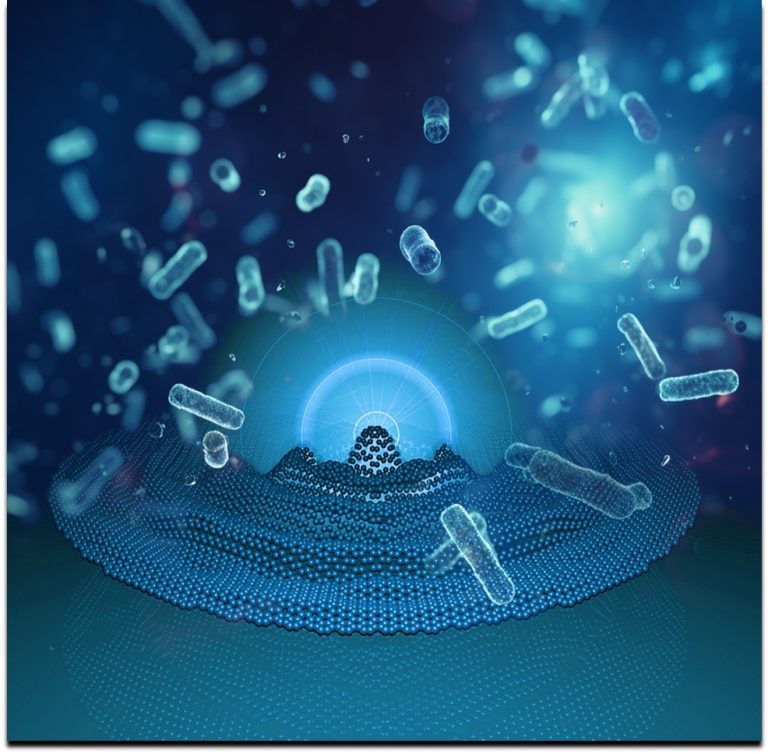Two million for graphene microphone

Impression of waves in a graphene membrane caused by bacteria. (Illustration: Santiago Mendoza Silva and Pierpaolo Belardinelli)
Farbod Alijani, associate professor at the Faculty of Mechanical Engineering, Marine Engineering & Technical Materials Science, has received an ERC Consolidator Grant to improve his ultra-sensitive microphone made with graphene membrane.
Alijani is one of 36 Dutch winners of this research grant of up to 2 million euros from the European Research Council ERC. In total, the ERC received 2,100 applications, of which 308 were honored – one in seven.
Last year, Alijani and his team showed that they could record the sound of a single bacterium using a sensor made of graphene, a single layer of carbon atoms in a hexagonal pattern.
Fellow researcher and bionano scientist Cees Dekker (Faculty of Applied Sciences) said, “What we saw was astonishing. When a single bacterium attaches itself to the drumhead of graphene, random vibrations with amplitudes of a few nanometers occur, which we were able to detect. We could hear the sound of a single bacterium!”
But Alijani also saw problems: susceptibility to noise and irregularities (“nonlinearities”). In the ERC-supported research project NCANTO, Alijani will develop a better fundamental understanding of the material with the goal of suppressing the noise.
- Extensive information on the TU Delft website
Do you have a question or comment about this article?
j.w.wassink@tudelft.nl

Comments are closed.